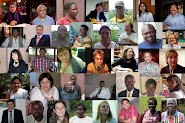
Originally posted on Lamp Post Reports - August 17, 2008 - by John T. Vaughn
The Center for Creative Leadership (CCL), based in Greensboro, NC over the past forty years has established itself as one of the, if not the, premier leadership development institutes. CCL’s specialty, historically, has been providing leadership development to Fortune 500 & 5000 type companies, the US Army, Air Force, Navy and Special Forces among other top clients. CCL has written and researched extensively on the subject of creative leadership, defined as “the capacity to achieve more than imagined by thinking and acting beyond boundaries” (from HBS case study on CCL). Currently, they have satellite offices in Colorado Springs, Colorado; San Diego, California; Brussels, Belgium; and Singapore. Dissatisfied with reaching only the 20,000 or so clients who annually pass through CCL training programs, CCL launched the Global Voice of Leadership (GVOL) initiative roughly three years ago. The GVOL initiative was launched with the intention of providing forty years worth of knowledge capital in leadership development to the majority (some like to call it the base of the pyramid).
CCL has been working on this initiative in a number of ways, but the one I can speak most knowledgeably of is their effort here in Ethiopia. Back in February I attended CCL’s first ever Leadership Beyond Boundaries course, a two week course to provide leaders in the developing world with the necessary tools and training to take what they learn about self awareness, direction, alignment, commitment and giving feedback back to their staff (most located in the developing world). The first course was hosted at CCL’s headquarters in Greensboro, NC but leaders based in Nigeria, Lagos, Kenya, Sudan, Uganda, India, the Caribbean, the US and other areas attended. Needless to say, it was quite the diverse group and I learned a tremendous amount.
Since that time, CCL has been engaged in a more intimate, though informal, relationship with Cherokee Gives Back. Gives Back’s presence in Addis provided CCL a base from which to recruit attendees for a Leadership Beyond Boundaries program held in Addis Ababa in mid-July. The workshop turned out to be quite a success. During the last two days of the workshop, the primary attendees (eleven in all, from various countries in East Africa) were required to practice what they learned by delivering a Leadership Essentials workshop to nearly forty local leaders (again, with the hope that these leaders would then train their staff or colleagues). These forty local leaders were from various sectors including non-governmental organizations (NGOs), the private sector and university students. The feedback from the program was generally quite positive, but that was only the tip of the iceberg.
Since the completion of the Leadership Beyond Boundaries workshop, Steadman Harrison and Dou Fall of CCL have been meeting with various organizations throughout Addis Ababa. These meetings have included a range of organizations and institutions from faith based youth programs, to Midroc (the largest private corporation in Ethiopia), Addis Ababa University, various NGOs and other grass roots organizations.
Even CCL, it seems, has been a little surprised by the high demand and prior knowledge of their organization and expertise here in the Horn of Africa. Steadman and Dou have proposals that, if signed, will keep them busy in Addis for at least the next few months.
As well, discussions have been initiated with community leaders around the topic of bringing leadership development to the majority, or base of the pyramid. This is certainly a challenge, as nearly 80% of the population is located in rural areas (costly to reach), and a large portion also do not read or write. At our first brainstorming session, the idea of broadcasting a leadership development series over the radio was mentioned as a possible distribution channel. At first glance, this idea appears to have potential as it is very much an orally based society and many people have radios, or at least access to them. As well, start-up costs should be minimal, but legalities may prevent such a series from ever launching.
One thing is clear, the demand for CCL’s expertise in creative leadership development and creative solutions is very high among the private sector, academic community, NGO sector and at the grass root level. With any luck, the contracts signed over the past few weeks will allow CCL to continue its focus on leadership development in the Horn, with the ultimate goal of providing their expertise not just to those capable of paying traditional rates but also to the majority, the base of the pyramid.




 Preston Yarborough
Preston Yarborough




































